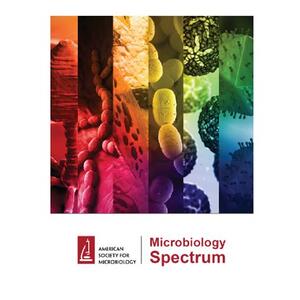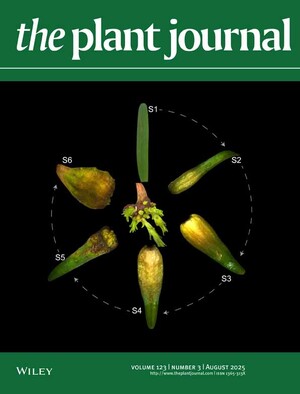
Kenya crops and dairy market systems development activity (KCDMSD)
The Kenya Crops and Dairy Market Systems Development Activity (KCDMSD) is a five-year (Oct 2017–Sept 2022) program of the United States Agency for International Development (USAID). It is funded as part of Feed the Future, the US government’s global hunger, and food security initiative that helps to increase agricultural production and reduce poverty and malnutrition in Kenya. The KCD activity is being implemented in 12 counties and is designed to spur competitive, resilient market systems in Kenya’s horticulture and dairy sectors.
Kenya is one of the fastest-growing economies in sub-Saharan Africa. Rising incomes and public and private investments in agriculture lay a strong foundation for Kenya’s continued growth trajectory. However, 90% of smallholder farmers still grow maize or other staple crops that have low-income generation potential. Smallholder dairy producers, who supply 70% of Kenya’s domestic milk supply, are constrained by nutrient-deficient animal feed, limited quality control and food safety measures, insufficient aggregation and cooling infrastructure, and a lack of productive dairy cows and in-country processing, all of which inhibit agriculture’s potential to reduce hunger and poverty. Export and value-addition opportunities in horticulture, although growing, are currently reaching only a fraction of the country’s smallholder farmers.
To ameliorate these challenges and improve the overall agricultural landscape in Kenya for horticulture and dairy, KCDMSD works to support five priority areas:
- A competitive, inclusive, and resilient agricultural market system;
- Diverse agricultural production and improved productivity;
- An improved policy environment for market systems development;
- Integration of women and youth into agricultural market systems; and
- Collaborative action and learning for market systems change and technology adoption.
The activity is strengthening the value chains for dairy, fodder/feeds, and horticulture (mango, passion fruit, avocado, banana, pineapple, and sweet potato). Rather than insert ourselves into the system, we identify the incentives, attitudes, capacities, and practices that stimulate market players to invest in higher productivity, quality improvements, greater efficiency, and relationships with other value chain actors, and work to facilitate their interactions.
The Kenya Crops and Dairy Market Systems Development Activity (KCDMSD) is a five-year (Oct 2017–Sept 2022) program of the United States Agency for International Development (USAID). It is funded as part of Feed the Future, the US government’s global hunger, and food security initiative that helps to increase agricultural production and reduce poverty and malnutrition in Kenya. The KCD activity is being implemented in 12 counties and is designed to spur competitive, resilient market systems in Kenya’s horticulture and dairy sectors.
- Kenya is one of the fastest-growing economies in sub-Saharan Africa. Rising incomes and public and private investments in agriculture lay a strong foundation for Kenya’s continued growth trajectory. However, 90% of smallholder farmers still grow maize or other staple crops that have low-income generation potential. Smallholder dairy producers, who supply 70% of Kenya’s domestic milk supply, are constrained by nutrient-deficient animal feed, limited quality control and food safety measures, insufficient aggregation and cooling infrastructure, and a lack of productive dairy cows and in-country processing, all of which inhibit agriculture’s potential to reduce hunger and poverty. Export and value-addition opportunities in horticulture, although growing, are currently reaching only a fraction of the country’s smallholder farmers.
To ameliorate these challenges and improve the overall agricultural landscape in Kenya for horticulture and dairy, KCDMSD works to support five priority areas:
- A competitive, inclusive, and resilient agricultural market system;
- Diverse agricultural production and improved productivity;
- An improved policy environment for market systems development;
- Integration of women and youth into agricultural market systems; and
- Collaborative action and learning for market systems change and technology adoption.
The activity is strengthening the value chains for dairy, fodder/feeds, and horticulture (mango, passion fruit, avocado, banana, pineapple, and sweet potato). Rather than insert ourselves into the system, we identify the incentives, attitudes, capacities, and practices that stimulate market players to invest in higher productivity, quality improvements, greater efficiency, and relationships with other value chain actors, and work to facilitate their interactions.
Project objective and approach
KCDMSD's goal is to transform agricultural market systems to enable intensification and diversification into higher value commodidities and non-farm activities.
KCDMSD's Approach
Markets systems facilitation
Rather than insert ourselves into the system, we identify the incentives, attitudes, capacities, and practices that stimulate market players to invest in higher productivity, quality improvements, greater efficiency, and relationships with other value chain actors, and work to facilitate their interactions.
Market-driven partnerships
As an entry point, we develop multilateral market agreements that bring together suppliers (e.g., farmers, representative associations, and cooperatives), buyers (e.g., financial services, business development services, and MSME value chain services). Through these agreements, we catalyse the development of networks of vertical and horizontal value chain actors.
Data democratization
Our simple yet transformative approach to data empowers partners to collect, analyse, share, maintain and learn from their own data.
Integrated local governance
The activity integrates a market systems approch with proven decentralized governance methods to address tangible and intangible contraints by strengthening accountability, transparency, and equitablity in access to services, within both the county governments and agricultural market systems.
Behavioral economics
The comple interaction of economic, social and individual incentives can lead to unexpected an unintended results. We constantly test our assumptions about what drives sustainable adoption, adaption, replication and scaling in our target communities.


















